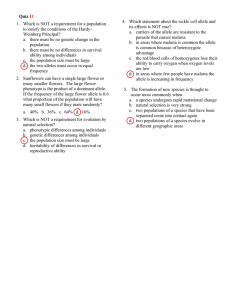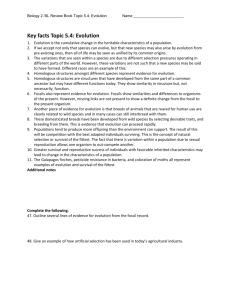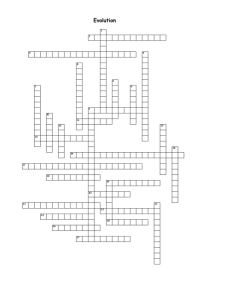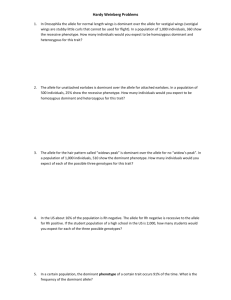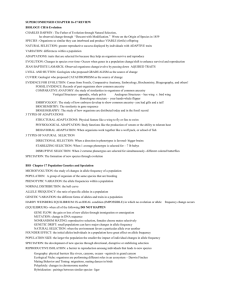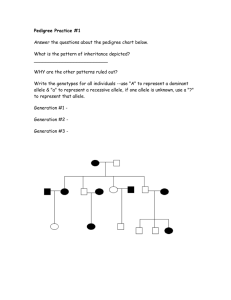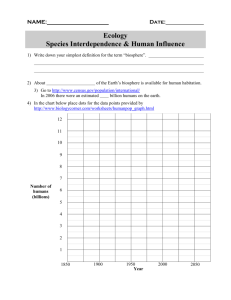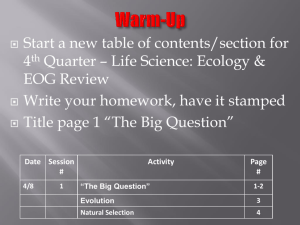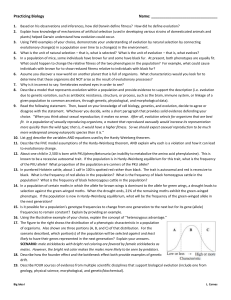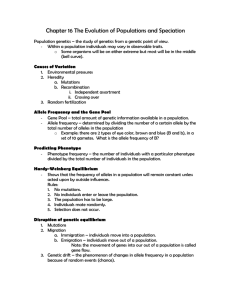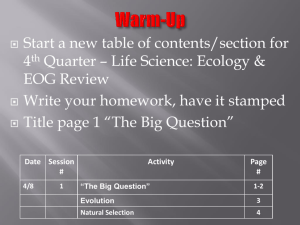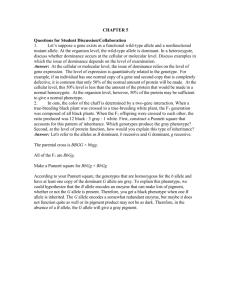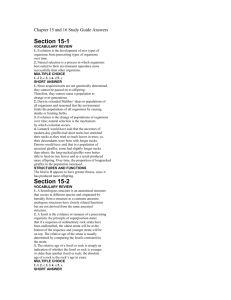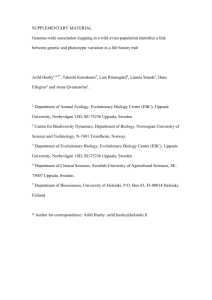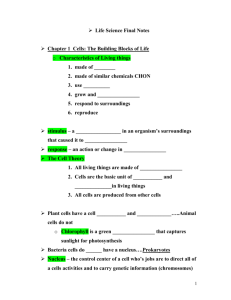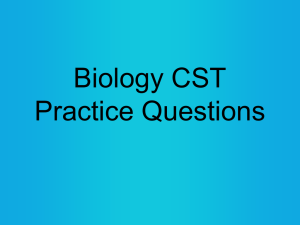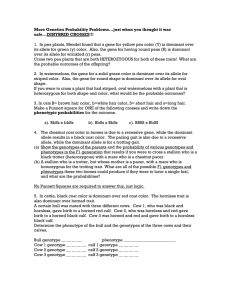Evolution Study Guide
advertisement
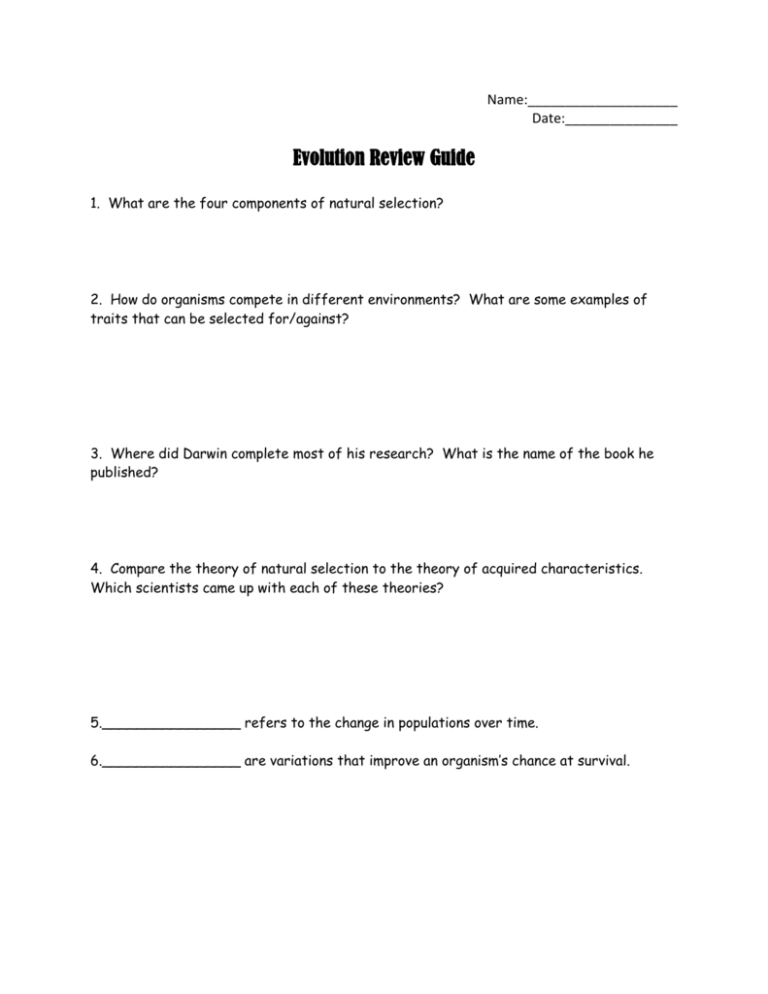
Name:____________________ Date:_______________ Evolution Review Guide 1. What are the four components of natural selection? 2. How do organisms compete in different environments? What are some examples of traits that can be selected for/against? 3. Where did Darwin complete most of his research? What is the name of the book he published? 4. Compare the theory of natural selection to the theory of acquired characteristics. Which scientists came up with each of these theories? 5.________________ refers to the change in populations over time. 6.________________ are variations that improve an organism’s chance at survival. True or False Directions: if your answer is false, explain why the statement is false. 7. True or false: Modern day giraffes have long necks because their ancestors stretched their necks to become longer. 8. True or false: During the hungry bird simulation, as spoons became more prevalent, they also became more dominant. 9. True or false: Color did not have an effect on survival/reproduction during the hungry bird simulation. 10. True or false: Some snow shoe rabbits were brown, some were black, some were white. The white ones blended in best with the snow and predators saw and ate the others leaving the white ones. 11. What theory of evolution is supported by the peppered moth scenario and the candy corn/M&M’s simulation? How are these two examples similar to one another? 12. Using the natural selection model, develop an explanation as to why bacteria have evolved to become resistant to antibiotics. 13. What were some characteristics of early Earth? What type of organisms first appeared on Earth? 14. What are four pieces of evidence that evolution has occurred throughout time? 15. Define species. 16. What is truly meant by “survival of the fittest?” Are the fittest organisms always those that are the strongest physically? VOCABULARY MATCHING 17. dominant 18. recessive 19. gene 20. allele 21. artificial selection 22. sexual selection 23. homologous structures 24. analogous structures A. possible version of a gene B. allele that is always expressed C. allele that is only expressed when there is NO dominant allele D. functionless structures that were functional in ancestors E. wings of hummingbird and wings of a moth are examples F. structures that have different functions but similar structures G. segment of DNA that codes for a trait H. humans select for a variation of a trait I. selection that acts on an organism’s ability to obtain or reproduce with a mate 25. vestigial structures *****YOU ALSO NEED TO STUDY THE CHAPTER 16 VOCABULARY SHEET*****

